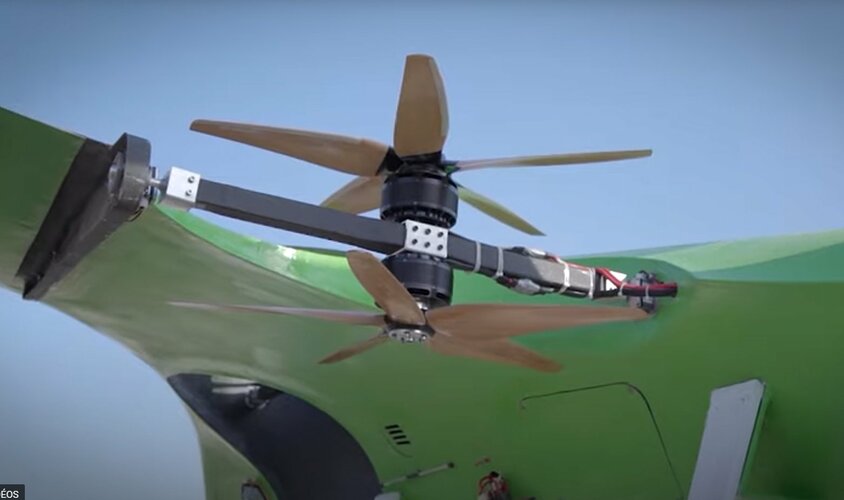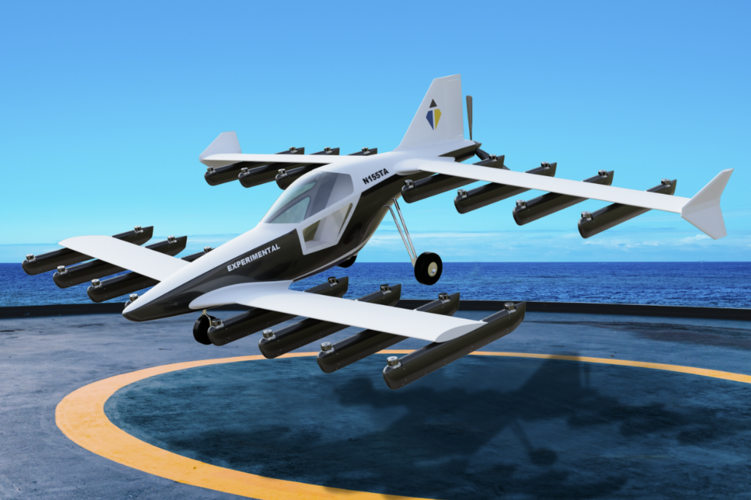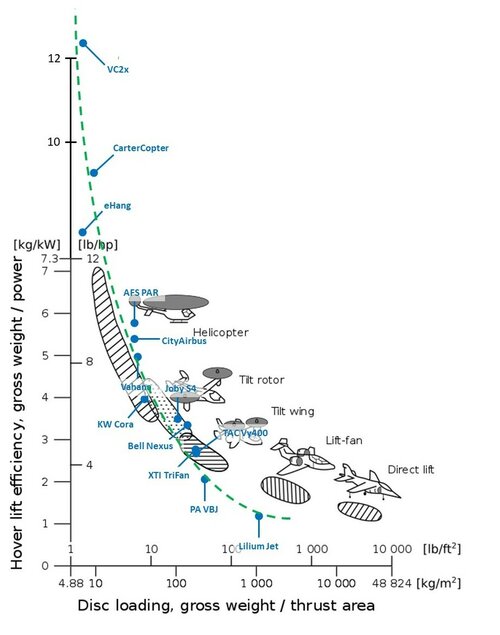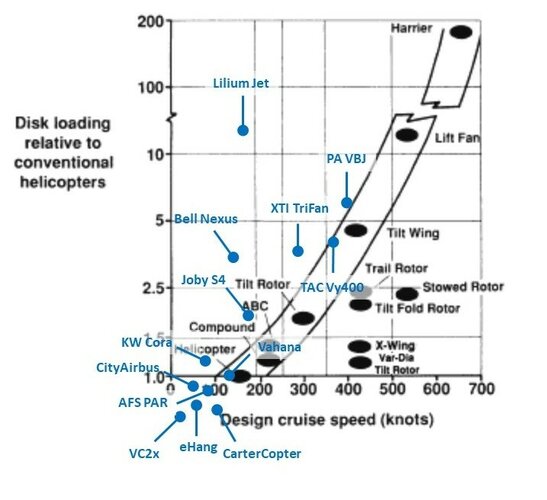dannydale
ACCESS: Top Secret
- Joined
- 13 May 2007
- Messages
- 545
- Reaction score
- 410
That's a Porsche S-91x Pegasus starfighter. https://christophorus.porsche.com/e...tyle-lucasfilm-boxster-s-starship-design.html


We finally get to hear what the Lilium evtol prototype sounds like on approach. Pretty quiet.




The USAF awarded Jetoptera, Inc. a Direct to Phase II Small Business Innovation Research (SBIR) contract. Jetoptera will design, build out and test an Upper Surface Blown Wing (USB) equipped, powered high-lift test article integrating Jetoptera’s Fluidic Propulsive System (FPS™), to characterize and further demonstrate the potential of FPSTM to create a signature managed propulsion for VTOL aircraft. The experimental data will be used to deliver a conceptual design of a High Speed Vertical Take Off and Landing (HSVTOL) aircraft.
Can someone smarter than myself please explain to me how USB fits in a VTOL scheme? USB has historically been used for wing lift augmentation and STOL. It also relies in having a very specific nozzle shape, not sure how Jetoptera's 'open loop' nozzle fits into this...The USAF awarded Jetoptera, Inc. a Direct to Phase II Small Business Innovation Research (SBIR) contract. Jetoptera will design, build out and test an Upper Surface Blown Wing (USB) equipped, powered high-lift test article integrating Jetoptera’s Fluidic Propulsive System (FPS™), to characterize and further demonstrate the potential of FPSTM to create a signature managed propulsion for VTOL aircraft. The experimental data will be used to deliver a conceptual design of a High Speed Vertical Take Off and Landing (HSVTOL) aircraft.
USAF Awards Jetoptera Direct to Phase II SBIR contract
jetoptera.com
Yes, a.k.a. "entrainment".The wing USB just gives direction to the airflow thanks to the Coanda effect. The Ejector gives the mass flow.
It's a result of air viscosity with each layer acting on the other (gases can't create a vacuum).
well...at some point you're going to want to land, it would be best if the landing gear were levelOr you could simply vary your attitude by Pitching up



That's a good point. 60s is optimistic if you're travelling into any sort of hub, with other traffic with its own demands, and all that hover time is eating into your battery capacity. At the end of a flight that could be a problem.I am not sure that you can integrate in many airports with only 60s of vertical lift. I hope that they have provisioned a normal landing mode.
Helicopters, for example, often have to follow taxi procedures while hovering close to the ground.
CATL's Sodium Ion battery is more designed for energy storage; i.e, they claim they can get costs down to the 20-40 USD range per kWh, which, with an estimated 1000 (maybe 2000?) cycle life, gets you to 1.25 cent per kWh storage (assuming 20% charge/discharge inefficiency) as a minimum, with 5 cents being the maximum.CATL is marketing a Sodium battery, one can probably look at the spec sheet for a rough idea on how this chemistry would work out.:
Seem usable but inferior, probably make sense in fixed storage and less mass critical applications like trains or ferries and some low end cars.
CATL claims to have made sodium-ion batteries a commercial reality
The manufacturer has launched sodium-ion products online. Production has begun and will be easily scalable, according to the CATL chairman. Researchers have been keen to make the technology work as it offers a cheaper, more environmentally friendly alternative to lithium-ion products.www.pv-magazine.com
If we are talking about metal air batteries overall though, it is still far from mature with unsolved cycle life/safety/etc problems and would likely come only after both solid state and silicon anode technology which is decade(s) down the line.
I'm not very impressed, unfortunately... I wonder why they didn't follow up the tilt-tandem wing configuration they extensively tested with A³ Vahana.Apparently CityAirbus got some wings... Actually a completely different aircraft
It seems to feature a mechanical powertrain and collective pitch control on each rotor... Isn't that exactly what you wanna get rid of to increase reliability / safety?
Kaman unveils Kargo UAV for autonomous resupply duties
Kaman has unveiled a new unmanned air vehicle design optimised for autonomous expeditionary logistics operations, such as those performed by the US Marine Corps.www.flightglobal.com
TLDR: turbine-powered quadcopter, 607kg, 7.4m by 7.4m, folds to fit an ISO container, first flight end 2022, 121kts, 362kg (800lbs) to 50nm or 136kg to 326nm either podded or underslung, 523nm self-deployment range with external fuel.
AIUI, once you get beyond a certain rotor size, there is too much rotational inertia to allow precise lift control purely by means of rotor speed. Thus you need collective pitch control.Be it cyclic or collective, the headache is the electro mechanical servo actuators.
From #666 above :-"folds to fit an ISO container". By the time you've re-engineered the Little Bird UAV to fold., you may as well have gone for the clean sheet design . . .However, why not use a proven helo platform and convert it into a cargo UAS? Actually it already exists!...
https://www.boeing.com/defense/unmanned-little-bird-h-6u/

I wanted to pick up on the cycles issue even if this isn't specifically discussing a battery aimed at the eVTOL market. If your battery life is 1000 cycles, and you're recharging three times a day in the eVTOL role, which is certainly a viable estimate, possibly even an underestimate, then you're replacing your battery pack once a year. And the industry would need not just the battery suppliers to handle that, but the battery recyclers to deal with all those piles of no-longer flightworthy batteries.CATL's Sodium Ion battery is more designed for energy storage; i.e, they claim they can get costs down to the 20-40 USD range per kWh, which, with an estimated 1000 (maybe 2000?) cycle life, gets you to 1.25 cent per kWh storage (assuming 20% charge/discharge inefficiency) as a minimum, with 5 cents being the maximum.
